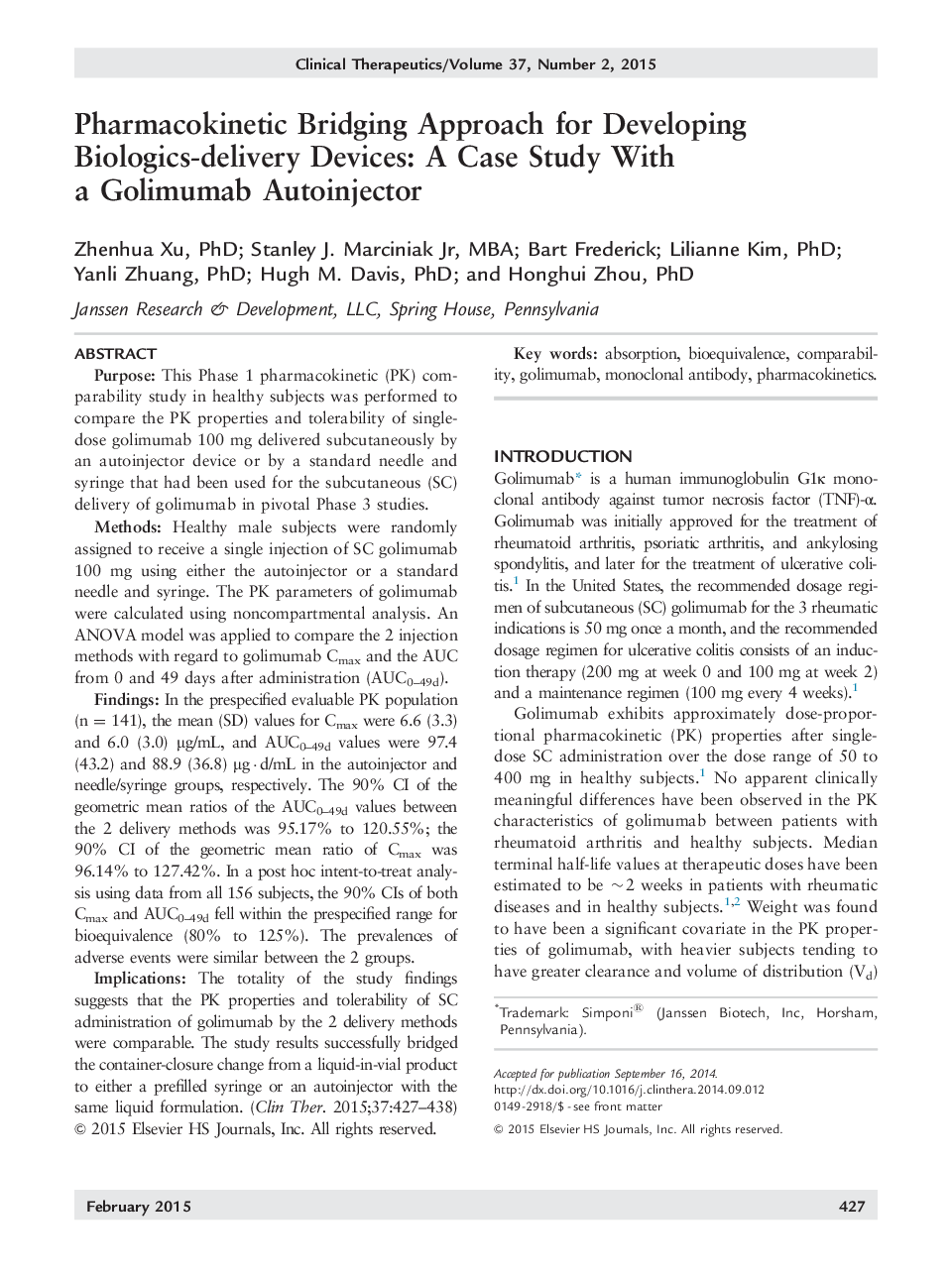| Article ID | Journal | Published Year | Pages | File Type |
|---|---|---|---|---|
| 5824848 | Clinical Therapeutics | 2015 | 12 Pages |
PurposeThis Phase 1 pharmacokinetic (PK) comparability study in healthy subjects was performed to compare the PK properties and tolerability of single-dose golimumab 100 mg delivered subcutaneously by an autoinjector device or by a standard needle and syringe that had been used for the subcutaneous (SC) delivery of golimumab in pivotal Phase 3 studies.MethodsHealthy male subjects were randomly assigned to receive a single injection of SC golimumab 100 mg using either the autoinjector or a standard needle and syringe. The PK parameters of golimumab were calculated using noncompartmental analysis. An ANOVA model was applied to compare the 2 injection methods with regard to golimumab Cmax and the AUC from 0 and 49 days after administration (AUC0-49d).FindingsIn the prespecified evaluable PK population (n = 141), the mean (SD) values for Cmax were 6.6 (3.3) and 6.0 (3.0) µg/mL, and AUC0-49d values were 97.4 (43.2) and 88.9 (36.8) µg·d/mL in the autoinjector and needle/syringe groups, respectively. The 90% CI of the geometric mean ratios of the AUC0-49d values between the 2 delivery methods was 95.17% to 120.55%; the 90% CI of the geometric mean ratio of Cmax was 96.14% to 127.42%. In a post hoc intent-to-treat analysis using data from all 156 subjects, the 90% CIs of both Cmax and AUC0-49d fell within the prespecified range for bioequivalence (80% to 125%). The prevalences of adverse events were similar between the 2 groups.ImplicationsThe totality of the study findings suggests that the PK properties and tolerability of SC administration of golimumab by the 2 delivery methods were comparable. The study results successfully bridged the container-closure change from a liquid-in-vial product to either a prefilled syringe or an autoinjector with the same liquid formulation.
